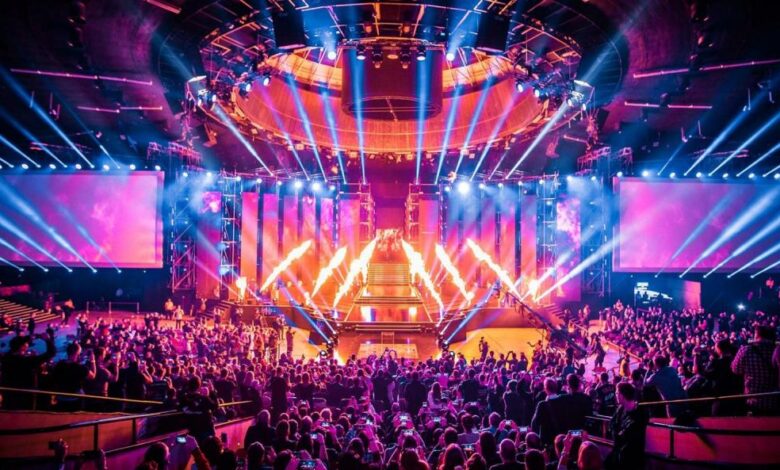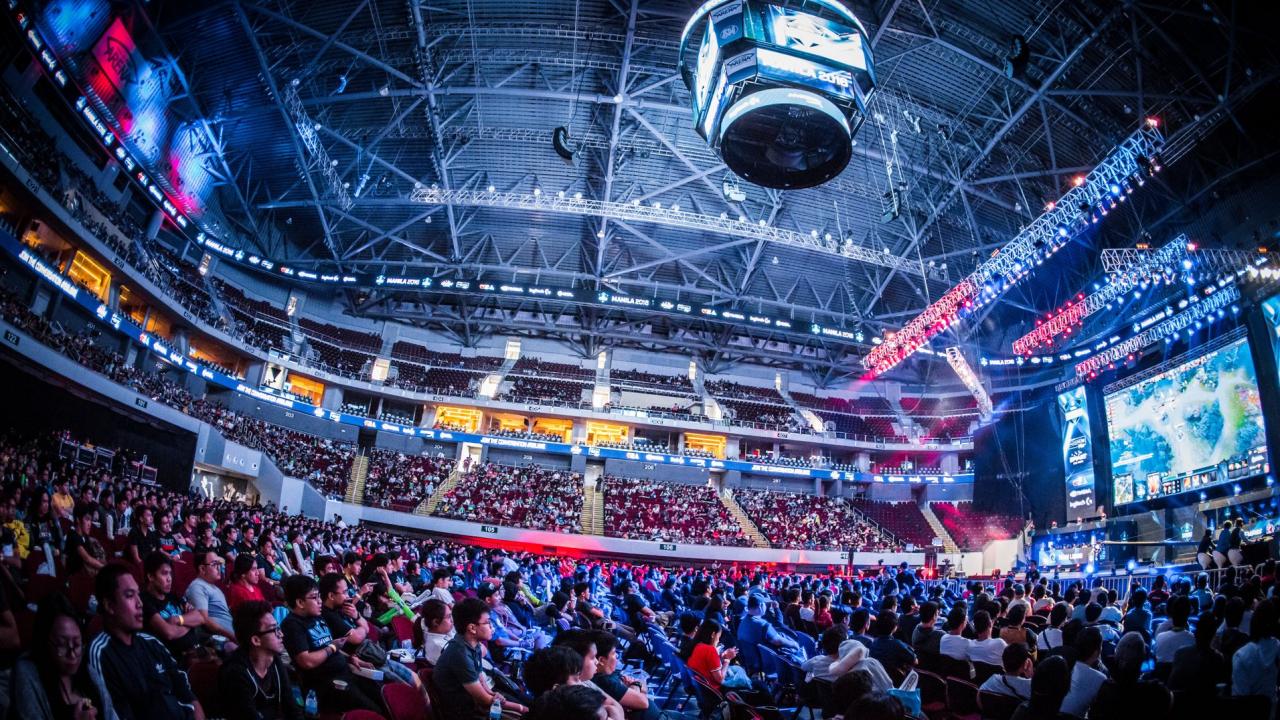E-Sport’s Popularity Explodes into A Global Phenomenon

The world of competitive gaming, once a niche subculture, has exploded into a global phenomenon, and we are on the cusp of a new era. E-sports, or electronic sports, is no longer just a hobby; it’s a multi-billion-dollar industry that rivals traditional sports in viewership, sponsorship, and professionalization. This rapid evolution is driven by a convergence of technological advancements, a new generation of digital-native fans, and a fundamental shift in how we view entertainment. This article will take a deep dive into the core trends shaping the future of e-sports, exploring the pivotal role of technology, the professionalization of the industry, the growing focus on athlete wellness, and the immense opportunities and challenges that lie ahead. The future of e-sports is not just about playing games; it’s about a new form of entertainment that is more immersive, more global, and more inclusive than ever before.
The Technological Revolution

At the heart of e-sports’ explosive growth is a continuous cycle of technological innovation. From the hardware players use to the platforms fans use to watch, technology is the lifeblood of the industry.
A. Next-Gen Gaming Hardware
The next generation of gaming hardware, from powerful PCs to next-gen consoles, is enabling a new level of performance and realism for e-sports titles. The shift to solid-state drives (SSDs) has eliminated long loading times, and the power of ray tracing is creating a more immersive and visually stunning experience for both players and spectators. This hardware is a key component of a professional e-sports player’s arsenal, where every millisecond of latency and every frame of a game can mean the difference between victory and defeat.
B. The Rise of Cloud and Mobile Gaming
The traditional barriers to entry in e-sports—a powerful PC or console—are being dismantled by the rise of cloud gaming and mobile gaming. Cloud gaming allows players to stream high-fidelity games to any device with an internet connection, democratizing access to the most demanding e-sports titles. Mobile gaming, with its ubiquitous accessibility, has turned a new generation of players into competitive contenders. This has led to the rise of massive mobile e-sports leagues, particularly in Asia, Africa, and Latin America. This new accessibility is a massive driver of growth, bringing e-sports to a global audience that was once left out of the conversation.
C. AI and Data Analytics
Artificial intelligence and data analytics are the hidden engines of the e-sports revolution. They are being used to analyze a player’s performance, to scout for new talent, and to create a more compelling viewing experience for fans.
- Player Performance Analytics: AI can analyze a player’s every move in a game, from their reaction time to their decision-making process, providing them and their coaches with invaluable insights for improvement. This is creating a new level of strategic depth and a more scientific approach to training.
- Automated Casting and Commentary: AI is being used to automate the casting and commentary for e-sports matches, providing a new level of detail and a faster response time than a human commentator. This allows for a more personalized and data-rich viewing experience for fans.
- Audience Engagement: AI can analyze audience behavior and engagement, helping teams and event organizers to create a more compelling viewing experience for fans. It can recommend specific matches, highlight key moments, and create personalized content for a fan’s feed.
The Professionalization of an Industry
The e-sports industry has matured from a grassroots, amateur community to a highly professionalized, global business. This is a profound shift that is creating new career paths and a new standard for athletic professionalism.
A. Professional Teams and Franchises
The world’s biggest e-sports leagues, such as the League of Legends Championship Series (LCS) and the Overwatch League (OWL), are now based on a franchise model, with professional teams that have a global fan base. These teams are run like traditional sports franchises, with team owners, coaches, managers, and a support staff that includes nutritionists and sports psychologists. They are attracting massive investment from traditional sports owners, venture capitalists, and multinational corporations.
B. The Rise of the E-Sports Athlete
The players themselves are now considered professional athletes. They sign multi-million-dollar contracts, have endorsement deals with major brands, and a level of fame that rivals traditional sports stars. They are also subject to a rigorous training regimen, with a focus on not only in-game skills but also physical and mental fitness. The life of a professional e-sports athlete is a demanding one, requiring a high level of discipline, a strategic mindset, and a deep-seated commitment to their craft.
C. The Academic and Corporate Ecosystem
A new ecosystem has emerged to support the professional e-sports industry. Universities are now offering scholarships and degree programs in e-sports management, coaching, and marketing. Corporations are investing heavily in new e-sports arenas, streaming platforms, and merchandise. This is a clear signal that the industry is here to stay and that it is a serious and viable career path.
The New Era of Athlete Wellness

As e-sports becomes more professional, there is a new and much-needed focus on athlete wellness. The demanding nature of a professional e-sports career can take a significant toll on a player’s physical and mental health.
A. Physical Health and Injury Prevention
Professional e-sports players spend thousands of hours a year practicing, which can lead to a variety of physical injuries, from carpal tunnel syndrome and eye strain to back pain and repetitive stress injuries.
- Ergonomics and Equipment: Teams are investing in professional-grade ergonomic equipment, from custom chairs to specialized keyboards and mice, to reduce the risk of injury.
- Physical Training: Players are now working with personal trainers and physical therapists to develop a training regimen that focuses on core strength, flexibility, and a healthy posture.
- Nutrition and Diet: A professional e-sports player’s diet is now a key part of their training regimen, with a focus on healthy, brain-fueling foods that can improve focus and reaction time.
B. Mental Health and Sports Psychology
The intense pressure of a professional e-sports career can have a significant impact on a player’s mental health. The constant scrutiny from fans, the pressure to perform at a high level, and the risk of burnout are all serious concerns.
- Sports Psychology: Teams are now working with sports psychologists to help players manage stress, anxiety, and the mental pressure of a high-stakes competition.
- Work-Life Balance: There is a new and much-needed focus on helping players maintain a healthy work-life balance, with a focus on mental rest, social interaction, and time away from the game.
- Community and Support: The e-sports community is coming together to create a more supportive and inclusive environment, with a focus on reducing online toxicity and creating a safe space for players and fans.
Conclusion
The future of e-sports is a powerful and transformative force that is fundamentally reshaping the landscape of entertainment and sports. What began as a niche subculture has evolved into a global phenomenon, driven by a convergence of groundbreaking technology, a new generation of digital-native fans, and a profound professionalization of the industry. The power of cloud and mobile gaming is dismantling the traditional barriers to entry, making e-sports more accessible and inclusive than ever before. The integration of AI and data analytics is not just a tool for optimization; it is the engine of a new era of strategic depth and a more scientific approach to training.
However, as we embrace the immense potential of this new era, we must also confront the significant challenges that lie ahead. The physical and mental well-being of the e-sports athlete is a critical concern that demands a new focus on holistic wellness and professional support. The issues of online toxicity, data privacy, and the need for a more inclusive and welcoming community are all hurdles that must be addressed proactively. The future of e-sports is not just about faster hardware or bigger arenas; it is about building a new ecosystem of entertainment that is more engaging, more social, and more human-centric than ever before. The e-sports revolution is here, and it is a powerful force that is poised to change the way we play and watch for generations to come.
